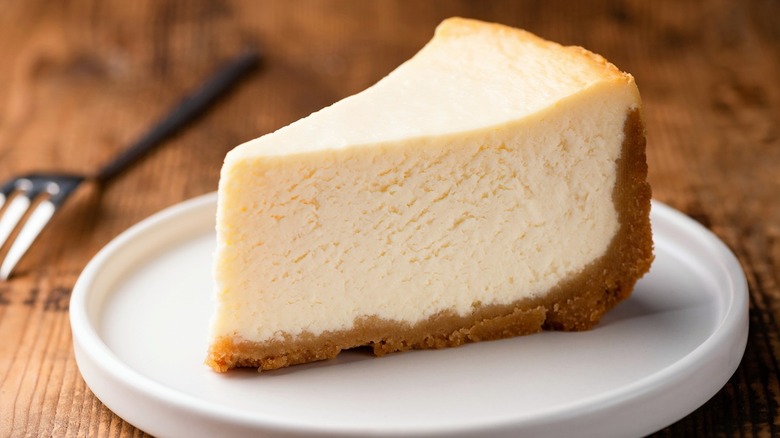What Happens If You Undermix Ingredients For Cheesecake
Cheesecake is arguably one of the most popular desserts in the United States. Rich and creamy, it's a favorite among many Americans. Just open up the massive menu at The Cheesecake Factory and you'll quickly get a hint of why it's such a hit — you can find cheesecake in almost any and every flavor imaginable, from classics like original and strawberry to more outrageous flavors like red velvet and peanut butter cup fudge ripple. For every sweet tooth that enjoys this treat, there's probably an equally toothsome and unique flavor – each one balancing out the sugary bites with a little bit of flavor.
When it comes to making cheesecake at home, you can't just dive into strawberries or butter cups – you'll have to consider the correct ingredients and proper process. There's the crust, for starters, which chef Curtis Stone says should start with "a nice fine crumb" that has the consistency of "wet sand" (via YouTube). A fine crust will keep the cheesecake from falling apart, says Sally's Baking Recipes. And then there's the all-important filling. Along with not substituting low-fat cream cheese (the fat gives it a firmer, creamier texture, per the Annals of Agricultural Sciences), you also shouldn't undermix your cheesecake ingredients. Here's why.
Undermixing can lead to chunks and lumps
It isn't just about what goes into your cheesecake that affects it — it's also about how you put everything together. One of the most crucial steps of making cheesecake is mixing the batter. According to Southern Living, if you undermix the cheesecake, you'll end up with a lumpy, chunky filling, which isn't exactly the creamy, smooth texture cheesecake is so famous for. They recommend doing it in two steps, first beating the cream cheese until it's nice and smooth and then folding in the rest of the ingredients like flour and eggs.
Another part of proper mixing is making sure all the ingredients are at room temperature. The blogger behind Baking Kneads, whose father was a baker, says you can microwave chunks of cold cream cheese for around 15 seconds at a time to help them reach room temp faster. But if other ingredients are mixed in while still cold, the cheese may harden again, preventing it from fully mixing. All that said, note that overmixing can be equally catastrophic when it comes to your final result. Bake from Scratch notes that too much mixing can create air bubbles in your filling which can cause it to either crack in the oven or collapse in the center.

